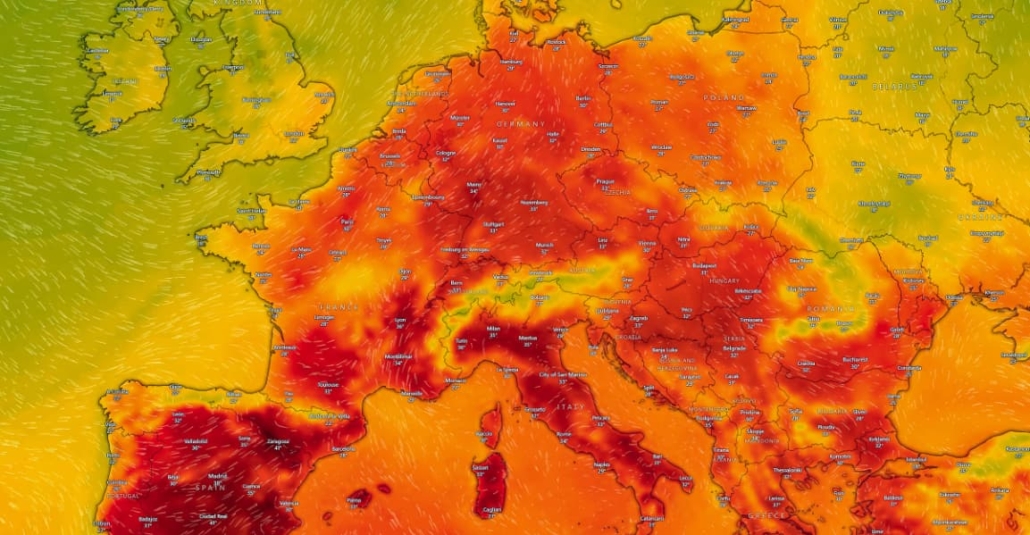Climate change and ageing populations set to exacerbate temperature-related deaths in Europe
A new modelling study suggests that climate change and ageing populations will lead to greater disparities in deaths from hot and cold temperatures across Europe by the end of the century, with southern regions facing the most significant increases in heat-related mortality.
Rising temperatures and shifting demographics
As Europe faces increasingly frequent heatwaves and an ageing population, researchers have conducted the most comprehensive analysis to date of how temperature-related mortality risks may evolve across the continent. The study, published in The Lancet Public Health [1], examined data from 1,368 regions in 30 European countries to model current disparities in deaths from hot and cold temperatures and estimate how these risks could change by 2100 under different global warming scenarios.
The findings paint a stark picture of the challenges ahead, particularly for southern European nations. While cold-related deaths currently far outnumber those attributed to heat, this ratio is projected to shift dramatically over the coming decades. By 2100, under a scenario of 3°C global warming, heat-related deaths in Europe could nearly triple from 43,729 to 128,809 annually.
Regional disparities and vulnerable populations
The study reveals significant regional variations in both current and projected temperature-related mortality risks. At present, Eastern Europe and the Baltic states experience the highest rates of cold-related deaths, while heat-related mortality is most pronounced in Croatia and the southernmost parts of the continent.
Dr Juan-Carlos Ciscar of the Joint Research Centre at the European Commission, who led the research, explained: “Our analysis reveals that the ratio of cold-heat deaths will shift dramatically over the course of this century, with those attributed to heat increasing in all parts of Europe and surging in some areas. At the same time, cold-related deaths will decline slightly overall.”
The elderly are particularly vulnerable to temperature extremes, and the study’s projections account for the anticipated growth in this demographic. By 2100, the majority of temperature-related deaths are expected to occur among those aged 85 and older.
Hotspots of concern
Under the 3°C warming scenario, the researchers identified several hotspots where the risk of heat-related death is set to increase dramatically. Spain, Italy, Greece, and parts of France are projected to face the most severe impacts, with mortality rates rising sharply.
Conversely, cold-related deaths are expected to see only modest decreases in most regions, with some areas even experiencing increases. Ireland, Norway, and Sweden, for instance, are predicted to see a rise in cold-related mortality, largely due to their rapidly ageing populations.
Implications for public health policy
The study’s findings underscore the urgent need for targeted policies to protect vulnerable regions and populations from the effects of extreme temperatures. Dr David García-León, another key researcher on the project, emphasised this point: “There is a critical need for the development of more targeted policies to protect these areas and members of society most at risk from temperature extremes.”
Such policies could include improvements in urban planning to reduce heat island effects, enhanced early warning systems for extreme weather events, and targeted support for elderly and vulnerable populations during temperature extremes.
While the study provides valuable insights, the authors acknowledge certain limitations. The results are based primarily on data from urban areas, which typically face higher levels of temperature stress than rural regions. Additionally, the model does not account for factors such as gender, ethnicity, or the effects on infants, another vulnerable group.
In a linked comment, Dr Matteo Pinna Pintor of the Luxembourg Institute of Socio-Economic Research highlighted the importance of considering multiple factors when projecting future climate impacts. He noted that the study “provides a powerful example of the potential for multidimensional projections of climate impacts to construct more accurate future predictions by explicitly considering the ways in which the impact of climate on human health could evolve in the future.”
Reference:
- García-León, D., Masselot, P., Mistry, M. N., et al. (2024). Temperature-related mortality burden and projected change in 1368 European regions: a modelling study. The Lancet Public Health. https://doi.org/10.1016/S2468-2667(24)00179-8


